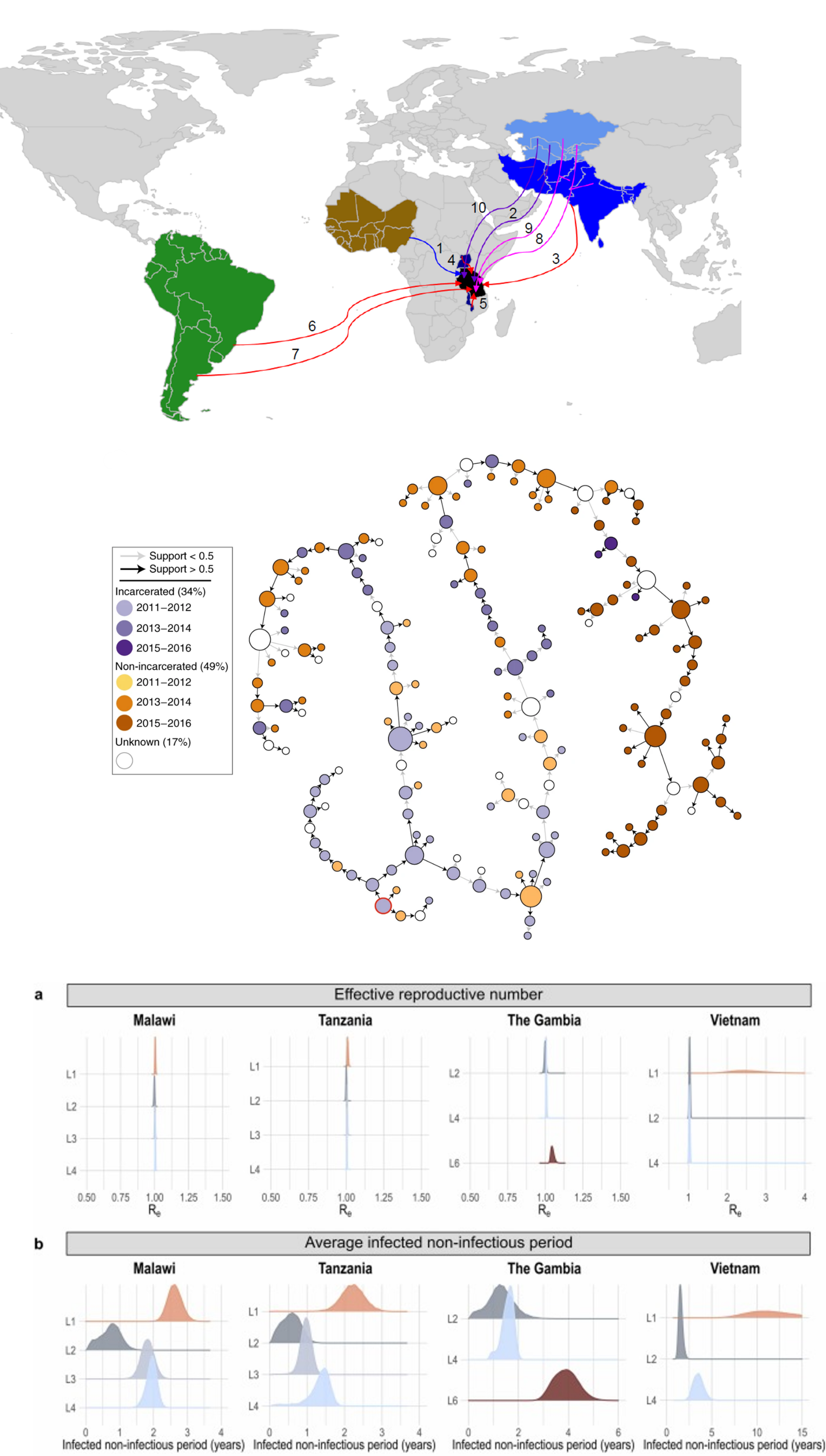Genomic Epidemiology of TB

Bern Outbreak
Using targeted whole genome sequencing and high-throughput SNP-typing, we revisited a TB outbreak that occurred in the early 1990s in Bern, Switzerland. We were able to identify several super-spreaders among the patients from this outbreak, who infected a particularly high number of secondary cases. Moreover, we were able to show that some TB patients belonging to this outbreak occurred as late as 2011.
Molecular Epidemiology of TB in High-Burden Countries
Harnessing next generation DNA sequencing technology allows us to study the epidemiology of TB in high burden regions, pairing Mtb genotypic data with clinical and demographic data. TB is thought to originate in Africa, in Tanzania we uncovered that the major circulating strains of Mtb were a result of recent re-introduction, supporting a back-to-Africa hypothesis for modern TB epidemics. In Georgia, we recently showed the substantial role of prisons as a major source of the spread of multidrug-resistant TB. Moreover, the MDR-TB epidemic in Georgia is largely shaped by patient-to-patient transmission.
Phylodynamic Modelling of Globally Prevalent Human MTBC Lineages
Applying phylodynamic models to TB data from different countries, we are able to study epidemiological characteristics of MTBC lineages. We recently reported that L1-L4 are responsible for the majority of the global TB burden, however literature shows that these lineages vary in their virulence. Using phylodynamic modelling we demonstrated that L1 strains- which cause the largest number of TB cases globally, are associated with delayed infectiousness in patients, however the rate of transmission and infectiousness remains similar to that of L2-L4 strains. We also apply phylodynamic modelling to understand the interaction between TB and clinical manifestations including symptomology and co-morbidities. Recently, using genomic and clinical data from sub-Saharan African countries, we published the association between HIV co-infection and developing active TB while concurrently being associated with reduced transmission.